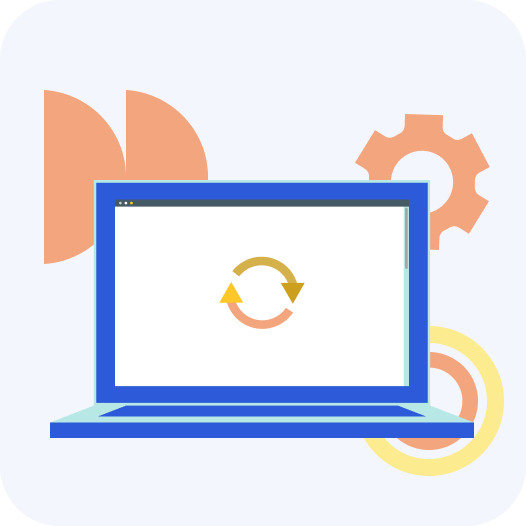Release notes
Discover the latest release notes for the cpmVision CCH Tagetik Power Bi dashboard. Explore the new features and functionalities, enhancements, and bug fixes that have been implemented to elevate your user experience.
Release notes 3.1
New features and functionalities
- New refresh report using “Fabric Data Functions”
- Rolling Time Span
- Entity Step Dive
- Native support of MDX “on.scenarioperiod” calculations in FST parser
Enhancements
- Commenting app enhancements
- Remove comments
- Historize comments
- Copy previous months comments
- Increased font size
- Improved extraction technique for handling large volumes of data
- New Time Span possibilities
- New Time Intelligence possibilities
Bug fixes
- Fix Previous Period in Time Intelligence
- FX rate conversion for Balance Sheet and Other Stocks
Release notes 3.0
New features and functionalities
- cpmVision AI integrated reporting templates
- Dynamic formatting for all metrics
- Integrated execution and performance metrics
Enhancements
- Faster load times
- Improved FST formula parser
- Streaming dataset phase out
- Time dependent hierarchy improvement
- Non-scalable calculation group made redundant
- Improved deployment concept
- Improved RLS concept for commenting solution
Bug fixes
- Delete partition script handling scenarios with “$” symbol
Release notes 2.9
New features and functionalities
- New FTS formula parser to support sophisticated formulas via standard data model.
- Job scheduler in refresh app to schedule up to 12 different refresh jobs with - potentially - different scenario-period combinations
- Azure Log Analytics to capture logging from:
- Azure Data Factory
- Azure Databricks
- Azure Automation Account
Enhancements
- Streaming Logging info as part of administration dashboard
- Model supports CCH Tagetik based periodic movement accounts
- Model supports Monthly Opening Balance accounts
- Extended Time Intelligence possibilities
- Optional
- User count as part of administration dashboard
Bug fixes
- Time out bug refresh app
- Advanced FST Detail Key
Release notes 2.8
New features and functionalities
- Parallel data processing in the backend which significantly improves refresh performance.
- Configure scenarios in CCH Tagetik to process in full instead of per period to improve refresh times even more.
- Amounts and journals (adjustments) combined in a single partition in Power BI to guarantee data integrity.
- Currency conversion on the fly for any of your CCH Tagetik configured currencies.
- Travel back and forth in time using the new Time span functionality. Select a range of periods and analyze your financial data over time with the click of a button.
- Non-Scalable feature: have all your KPIs that should not be scaled (such as FTEs) displayed correctly without scaling.
- Lock individual comments in the commenting app as an individual user.
- Lock a group of comments in the commenting app as an administrator.
Enhancements
- Start Logging step in ADF before starting Databricks cluster to give instant feedback after initiating refresh.
- Functionality to display comments without considering the FST Schema filter
- Functionality to display comments without considering the FST Schema and Screen Name filters
- Added by default parameter fields:
- Periods
- Periods Rolling
- Periods Time Span
- Dimensions
- Scenario References + delta’s + delta %
- “related-to” elements in entity segments moved to ‘other/cons’ buckets
- “related-to” elements in dimension 2 segments moved to ‘other/cons’ buckets
Bug fixes
- “Empty” FST Accounts Account parent items populated with dummy record instead of its own fst account code.
- Inconsequent logging in Azure Data Factory to real-time refresh logging dataset fixed
- Time Intelligence bug on “Previous Period” fixed
- Time Intelligence bug Last 12 Months fixed
- Local Currencies were not transposed correctly, this has been fixed.
- Parent-child hierarchy for Accounts was not transposed correctly, this has been fixed
Release notes 2.7
New features and functionalities
- Out of the box Analytical Information Hub module
- Administration dashboard
- Get refresh times per scenario-period
- Get refresh times per dimension
- See the volume of every scenario-period combination in the dataset
- See how you’ve configured your scenario references logic
- Comments stored in CCH Tagetik available in cpmVision modelSet screen definitions via commenting app
Enhancements
- Added functionalities to Power app
- Remove data from dataset
- Configure pre-calculated currencies
- Configure pre-calculated constant currencies
- Analytical Information Hub interface
- Improved FST formula parser to support more FST items by default
- Rolling commenting
- Other stock accounts in YTD
Release notes 2.6
New features and functionalities
- Single table refresh functionality in the refresh app
- Full year and periodic selection in the refresh app
- Advanced FST as selectable item (which can lead to drastic performance increase for non-Advanced FSTs)
- Amounts Intercompany derived from CCH Tagetik and part of cpmVision datamodel
- Exchange Rates derived from CCH Tagetik and part of cpmVision datamodel
- Improved Time Intelligence based on CCH Tagetik logic and functionality
- Weeks are now fully supported in the cpmVision datamodel
Enhancements
- Improved sorting in FST Accounts dimension
- Attributes from Tagetik carried over for Dimension 1 to 5, Entities and Scenarios
- Origin from fact tables carried over for data analysis
- Improved deployment tooling (Bicep, DevOps library)
- Improved technical documentation
- Better streamlined metadata and configuration approach in Azure
- Scenario Previous as a separate table to select
Bug fixes
- Naming conventions on Entity Counterparts fixed
- Naming conventions on Dimension 2 Counterparts fixed
- Naming conventions on Dimension 2 Segments fixed
Release notes 2.5
New features and functionalities
- FX Rates
- Local Currencies
- Microsoft Bicep deployment
- OAuth2.0 authentication by default
- Full deployment from Azure Devops
- Scenario References
- FST Accounts in Python
- Principal of least privilege on service principals
- Managed identities in Azure for authentication where possible
- cpmVision dashboard starter kit
- Commenting solution
- Visual Definitions and Screen Definitions input
- Dimension 2 Segments
- Orchestration in Azure Data Factory is now fully metadata driven
- Deployment of Databricks notebooks from Azure ETL Builder
- cpmVision ETL Admin PowerApp is now able to refresh just the FSTs.
Enhancements
- Financial transformation: 1 notebook per final table instead of 3 for adjustments, amounts, adjustments consolidated, amounts consolidated
- Currency table showing only those currencies present in the datamodel
- Databricks cluster wake-up notebook to prevent cluster deletion after period of inactivity
Bug fixes
- ADF - Scenario Periodo PREP and Process Scenario Extract mapping create the same table
- Entity Segments Sorting was not correct
- Fixed incorrect Dimension 2 Code Counterpart naming and relationships in datamodel
- Wrong authentication methods on ADF deployment
- Importing tables in Databricks could cause a table to go in broken state. This has been adjusted.

